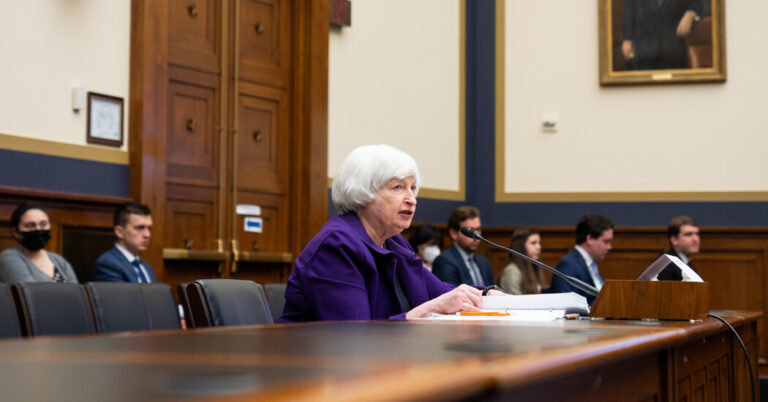Cruise’s C.E.O. Quits as the Driverless Carmaker Aims to Rebuild Trust
Kyle Vogt, a founder and chief executive of Cruise, the driverless car subsidiary of General Motors, resigned on Sunday, less than a month after Cruise suspended all autonomous operations after a series of traffic mishaps.
The resignation is a stunning fall from prominence for one of the tech industry’s most outspoken champions of self-driving cars. He leaves behind a company in deep crisis and an industry that is confronting increased public and regulatory scrutiny.
Cruise pulled all of its driverless cars off the road after its license to operate them was suspended in California. With its costs spiraling, the company is considering layoffs. And it is awaiting a report from an outside law firm’s investigation into how it responded to a crash last month in which a Cruise car dragged a woman 20 feet.
In the face of those challenges, General Motors, which acquired Cruise for $1 billion in 2016, has taken a more active role in its subsidiary, and it is expected to deepen its involvement in Mr. Vogt’s absence. Instead of installing a new chief executive, G.M. appointed two presidents who will report to its board: Mo Elshenawy, Cruise’s executive vice president of engineering, and Craig Glidden, G.M.’s general counsel.
The upheaval at Cruise has caused worry among driverless car rivals that regulators could increase their enforcement and scrutiny of the industry, slowing the expansion plans of Aurora; Zoox, a division of Amazon; and Waymo, which has been operating robot taxis in San Francisco largely without incident.
Mr. Vogt, 38, didn’t respond to requests for comment. In a post on X, the platform formerly known as Twitter, he said, “The last 10 years have been amazing, and I’m grateful to everyone who helped Cruise along the way.”
Mr. Vogt started Cruise a decade ago and promoted driverless cars as a way to stop car-related deaths while generating billions of dollars. But ever since the crash last month, that future has been in doubt.
Mary Barra, General Motor’s chief executive, sent an email to Cruise’s employees on Sunday in which she thanked Mr. Vogt for “his tremendous vision” and said that the board understood and respected his resignation.
“The board and I also want you to know that we are intensely focused on setting up Cruise for long-term success,” she wrote. “Public trust is essential to this. As we work to rebuild that trust, safety, transparency and accountability will be our north stars.”
Cruise’s troubles accelerated over the summer as the company expanded its self-driving taxi fleet in San Francisco. Over a few months, 10 Cruise vehicles stopped functioning in the middle of a busy street. In a separate episode, a Cruise car collided with a fire truck. Another one of its vehicles drove into wet concrete and got stuck.
But the most problematic episode happened on Oct. 2 when a Cruise car dragged the woman. A car had hit the woman in a San Francisco intersection and flung her into the path of one of Cruise’s driverless taxis. The Cruise car ran over her, briefly stopped and then dragged her before pulling to the curb.
When California’s Department of Motor Vehicles investigated the accident, it said that Cruise had omitted footage of the woman being dragged from a video it had provided to the agency. The D.M.V. said that Mr. Vogt was not among three executives who attended a meeting about the accident.
On Oct. 24, the D.M.V. told Cruise to shut down its driverless car operations in the state. It said that it had met with the self-driving car company approximately 50 times in 2023.
After the accident, Cruise said that it had hired Quinn Emanuel, a law firm, to investigate the company’s response to the crash. It also hired Exponent, a consulting firm that evaluates complex software systems, to conduct a separate review of the crash.
The timing of Cruise’s suspension was unfortunate for Ms. Barra. She has spent years promoting its potential to benefit G.M.’s business. She was a co-chair of the Asia-Pacific Economic Cooperation’s business conference in San Francisco, which was attended by dignitaries from around the world, including President Biden. The event should have afforded her a chance to show off Cruise’s ability to chauffeur people around the city in Chevy Bolts without drivers. Instead, its driverless cars were parked.
Mr. Vogt has been dreaming of building self-driving cars since childhood. He started Cruise after his first start-up, a company that became Twitch, was bought by Amazon for $1 billion.
In his post on X, Mr. Vogt expressed pride in what he had achieved and channeled Silicon Valley’s mythology about start-up founders who build businesses in a garage.
“The start-up I launched in my garage has given over 250,000 driverless rides across several cities, with each ride inspiring people with a small taste of the future,” Mr. Vogt wrote.
Check out our Latest News and Follow us at Facebook
Original Source







